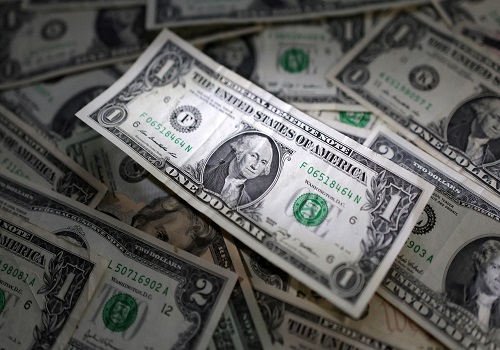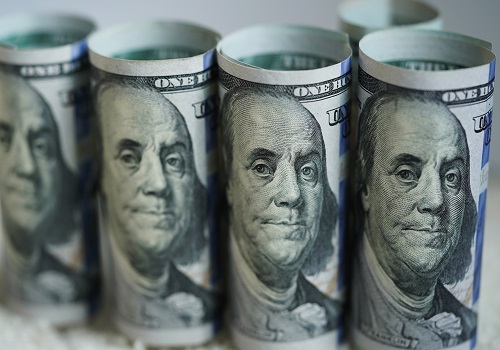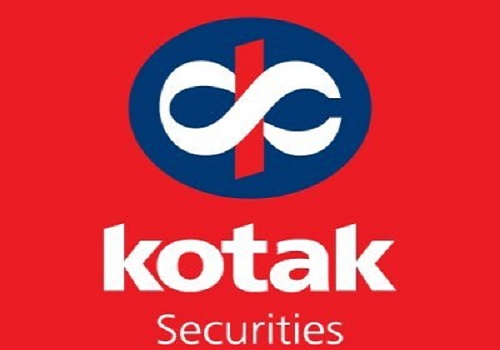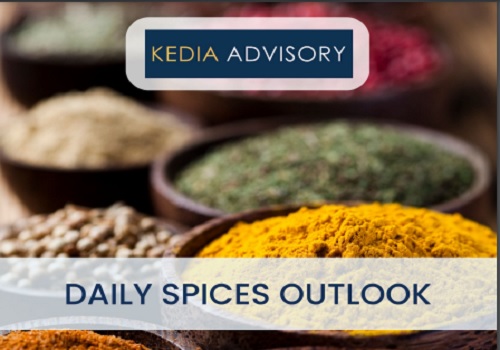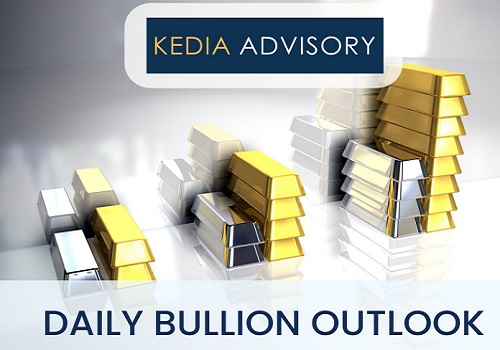Copper trading range for the day is 874.9-885.3 - Kedia Advisory
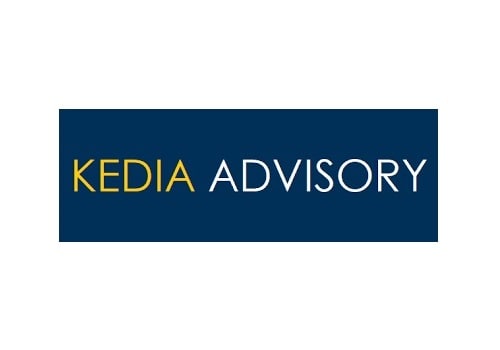
Gold
Gold prices edged higher by 0.28% to settle at 99,388, bolstered by rising geopolitical tensions in the Middle East. The U.S. has now officially entered the Israel-Iran conflict, launching strikes on Iran’s key nuclear sites. President Trump has warned of further military action if Iran does not pursue peace, adding a layer of safe-haven demand to gold’s ongoing rally, which has now seen nearly a 30% gain year-to-date. Amid this geopolitical backdrop, investor attention is turning toward the U.S. Federal Reserve. Fed Chair Jerome Powell’s upcoming testimony before Congress, alongside several speeches from other officials, is expected to shed light on how the Fed views the dual impact of Trump’s tariff plans and Middle East instability on the U.S. economy. On the demand side, central banks remain key players, with 95% expecting global reserves to rise and 43% planning to increase their holdings—an all-time high, according to the World Gold Council. Indian physical gold discounts have narrowed to $27/oz, down from $63, as domestic prices eased slightly. Chinese premiums also slipped due to muted demand. Globally, gold demand rose 1% YoY in Q1 2025 to 1,206 tons, driven by a 170% surge in investment demand, even as jewelry consumption plunged 21%. Technically, the market is under fresh buying, with open interest rising by 0.33% to 14,786. Gold has immediate support at 98,880, with further downside seen at 98,365, while resistance is pegged at 99,870; a break above this could lift prices toward 100,345.
Trading Ideas:
* Gold trading range for the day is 98365-100345.
* Gold rises as U.S. joins Israel in striking Iran’s nuclear sites, escalating tensions.
* Trump warns of more attacks if Iran doesn’t agree to peace; markets await response.
* Fed Chair Powell to testify before Congress on tariffs, inflation, and Iran conflict.
Silver
Silver prices climbed 0.5% to settle at 106,759, driven by renewed safe-haven demand amid escalating geopolitical tensions and resilient industrial support. The rally followed the U.S. airstrikes on three Iranian nuclear sites, marking a direct American military intervention in the ongoing Israel-Iran conflict. On the macroeconomic front, the U.S. Federal Reserve kept interest rates unchanged while signaling two possible rate cuts by year-end. However, the Fed also warned that President Trump’s proposed tariffs could elevate inflationary pressures, complicating the economic outlook. This dual narrative of geopolitical risk and inflation concerns continues to offer a supportive backdrop for precious metals, especially silver. Fundamentally, silver remains underpinned by a structural supply deficit, now projected to continue into its fifth consecutive year in 2025. According to the Silver Institute, the global shortfall is expected to narrow slightly to 117.6 million troy ounces, driven by a 1% dip in demand and a 2% increase in supply. Industrial demand remains robust, with fabrication volumes forecast to surpass 700 million ounces, supported by green economy applications and electrification trends. Silver investment demand is also poised to rise 3%, despite weak jewelry consumption, particularly in India, where high domestic prices have dented demand. Technically, silver is experiencing short covering, with open interest down by 5.7% to 12,028 while prices advanced 535. Support is placed at 106,355, with a downside test likely at 105,945. Resistance stands at 107,130, and a breakout above could push prices toward 107,495.
Trading Ideas:
* Silver trading range for the day is 105945-107495.
* Silver rises on safe-haven demand amid U.S. airstrikes on Iranian nuclear sites.
* US joins Israel in Iran conflict, sparking fears of broader Middle East escalation.
* Fed holds rates, signals two cuts in 2025; maintains cautious, data-dependent stance.
Crude oil
Crude oil prices plunged 5.59% to settle at 6,046, marking one of the sharpest single-day declines in recent sessions. The sell-off was triggered as initial fears of severe supply disruptions in the Middle East began to fade. Despite the U.S. launching airstrikes on Iran and joining Israel in military operations, oil and gas shipments from the region continued uninterrupted. This led traders to reassess the geopolitical risk premium that had previously supported prices. Adding to the downward pressure, Russian Deputy Prime Minister Alexander Novak stated that the global oil market remains balanced, and there is no immediate shortage resulting from the conflict. He also commented that any price move toward $100 per barrel would depend on market psychology and risk perceptions, not fundamentals. A Goldman Sachs report added that Brent could temporarily spike to $110 only if flow through the Strait of Hormuz is halved for a month and remains 10% lower for an extended period. On the supply side, the EIA report showed a massive 11.473 million barrel drop in U.S. crude inventories, the largest in a year, far exceeding the expected 2.3 million barrel decline. However, this bullish signal was overshadowed by broader market risk aversion and geopolitical uncertainty. From a technical standpoint, crude oil is under fresh selling pressure, as open interest surged by 16% to 11,048 contracts, reflecting new short positions. Prices have support at 5,860, with further downside likely at 5,675. Resistance is now pegged at 6,390, and a break above could lead to testing 6,735.
Trading Ideas:
* Crudeoil trading range for the day is 5675-6735.
* Crude oil dropped as initial fears of major supply disruptions from the Middle East faded.
* No oil supply disruption yet from US attack on Iran
* Brent could briefly peak at $110 a barrel if oil flows through the Strait of Hormuz were halved for a month – Goldman Sachs
Natural gas
Natural gas prices declined sharply by 4.23% to settle at 319, weighed down by expectations of a near-term cooldown in U.S. temperatures and rising domestic production. The intense heat wave currently affecting the eastern U.S. is forecast to subside in the coming days, easing short-term cooling demand and prompting a correction in prices. Despite continued geopolitical risks — including escalating tensions following Israeli airstrikes on Iran’s nuclear and military infrastructure — LNG shipments through the vital Strait of Hormuz have so far remained unaffected, keeping supply concerns at bay. On the supply side, U.S. dry gas production remains robust, averaging 105.3 bcfd in June, only slightly below the March record. Meanwhile, the EIA reported a 95 bcf storage injection for the week ending June 13, narrowly missing forecasts of 96 bcf. Longer-term outlooks remain bullish. The EIA's Short-Term Energy Outlook projects record-high production and demand in 2025, with dry gas output expected to reach 105.9 bcfd, and LNG exports to rise from 11.9 bcfd in 2024 to 14.6 bcfd in 2025, and 16.0 bcfd in 2026. From a technical perspective, the market is undergoing long liquidation, with open interest falling 20.69% to 9,341 contracts, suggesting exit of bullish positions. Natural gas has immediate support at 311.3, with further downside risk to 303.6. On the upside, resistance is placed at 333.4, and a breakout above that could lift prices toward 347.8.
Trading Ideas:
* Naturalgas trading range for the day is 303.6-347.8.
* Natural gas dropped on rising output and forecasts for the heat wave blanketing.
* Israel-Iran conflict raises LNG supply concerns via the crucial Strait of Hormuz.
* U.S. gas output averages 105.3 bcfd in June, slightly below March’s record levels.
Copper
Copper prices edged up marginally by 0.07%, settling at 881.05, amid heightened geopolitical tensions and tight supply indicators. The modest uptick came despite broader market jitters following US airstrikes on three Iranian nuclear facilities, escalating the Middle East conflict and raising fears of retaliation that could disrupt global commodity flows, particularly through the critical Strait of Hormuz. On the supply front, Shanghai Futures Exchange copper inventories dropped 1.1% from the previous week, signaling tight availability. At the London Metal Exchange, backwardation surged, with the tom-next premium exceeding $48/ton, a stark contrast to the $2 discount earlier this week. Similarly, the cash-to-three-month premium rose sharply to $180/ton, compared to just $3 a month ago. These shifts highlight tight physical market conditions and strong demand for prompt delivery. Notably, LME copper stocks have plummeted over 60% since mid-February to 99,200 tons, their lowest since August 2023, with cancelled warrants accounting for 45%, or 44,800 tons, indicating large quantities earmarked for delivery. However, global macro data added some pressure. The International Copper Study Group reported a 17,000-ton surplus in March, down from 180,000 tons in February. China's imports in May also showed a mixed trend—copper concentrate imports fell 18% month-on-month, while unwrought copper and copper product imports declined 2.5% month-on-month and 16.9% year-on-year. Technically, the market is undergoing short covering, with open interest falling 18.7% to 1,956. Support lies at 878, with a break lower potentially testing 874.9, while resistance is seen at 883.2, above which 885.3 could be tested.
Trading Ideas:
* Copper trading range for the day is 874.9-885.3.
* Copper steadied as escalating geopolitical tensions weighed on market sentiment.
* Premiums for nearby copper contracts on the LME have jumped to their highest since October 2022 because of low inventories
* Copper inventories in warehouses monitored by the Shanghai Futures Exchange fell 1.1% from last Friday
Zinc
Zinc prices rose by 0.65%, settling at 254.95, supported by a notable drop in inventories at the Shanghai Futures Exchange (SHFE), which reported a 5.7% decline from last Friday. This inventory drawdown suggests tightening supply conditions and provided a floor to prices despite broader market uncertainties. Demand-side worries persist, with Chinese buyers remaining cautious, limiting purchases to short-term needs as manufacturing activity slows. China's factory output in May hit a six-month low, signaling persistent pressure on industrial metals, though better-than-expected retail sales data gave a glimmer of hope for future demand recovery. On the supply side, global production faces headwinds. Teck Resources’ Red Dog Mine, the world’s largest zinc mine, reported a 20% annual decline in output, while Nyrstar's Australian smelter announced a 25% cut in this year’s production due to uneconomical treatment charges, reflecting ore shortages. Meanwhile, refined zinc production in China fell 1% month-on-month in May and rose only 2% year-on-year, underperforming market expectations. Several Chinese smelters underwent planned and unplanned maintenance, further limiting output. The global zinc market surplus narrowed to 16,000 tons in April, down from 23,400 tons in March, as per the International Lead and Zinc Study Group (ILZSG). Technically, the market is experiencing short covering, with open interest dropping by 31.25% to 937. Support is seen at 253.10, below which prices may test 251.30, while resistance is likely at 256.10, with a breakout potentially extending gains to 257.30.
Trading Ideas:
* Zinc trading range for the day is 251.3-257.3.
* Zinc gains as support seen after SHFE inventories fell 5.7%
* However upside seen limited amid ongoing uncertainty over the Israel-Iran conflict.
* Production out of Teck Resources' Red Dog Mine in Alaska, dropped 20% annually to 145,300 tonnes in the first quarter of the year.
Aluminium
Aluminium prices rose by 0.87% to settle at 248.65, supported by a surge in energy prices following U.S. airstrikes on Iranian military targets. The geopolitical tension, particularly President Donald Trump’s comments hinting at potential regime change in Iran, lifted energy markets, which in turn buoyed aluminium — a highly energy-intensive metal. However, gains were restricted by uncertainty surrounding tariff policies and sluggish Chinese demand, despite broader bullish signals. On the supply front, concerns continue to mount regarding the bauxite supply from Guinea, where disputes between the government and Emirates Global Aluminium threaten mining operations. This adds risk to raw material availability for aluminium production globally. Still, the rise in LME open tonnage inventories, despite large positions held by trading firm Mercuria, prevented a sharper rally. In terms of production data, global primary aluminium output rose 1.5% year-on-year in May to 6.245 million tonnes, according to the International Aluminium Institute (IAI). China, the world’s largest aluminium producer, recorded a 5.0% year-on-year increase in May output to 3.83 million metric tons, with cumulative production in the first five months up 4.0% to 18.59 million tonnes. Technically, the market is in short covering, as open interest dropped sharply by 42.95% to 1125, reflecting a retreat of bearish positions. Aluminium now finds support at 247, with further downside potential to 245.20, while resistance is seen at 250.30, and a move above that could push prices towards 251.80.
Trading Ideas:
* Aluminium trading range for the day is 245.2-251.8.
* Aluminium rises as U.S. strikes on Iran lift energy costs, a key input for production.
* Chinese demand uncertainty and tariff risks cap upside momentum in aluminium prices.
* Global primary aluminium output rose 1.5% y/y in May to 6.245 million tonnes: IAI.
Turmeric
Turmeric prices edged up by 0.87% to close at 14,388, recovering from earlier losses due to short covering. The uptick comes amid ongoing weakness in both domestic and export demand, which had previously pressured the market. Despite the price recovery, market sentiment remains cautious, especially with turmeric arrivals rising to 13,660 quintals from 11,940 quintals in the prior session, signaling slightly higher availability. On the production front, dry weather conditions are aiding timely planting. Estimates suggest a 15–20% increase in turmeric acreage for the 2024–25 season as farmers shift away from less profitable crops. However, actual output may not see a proportional rise, as untimely rains and crop issues—notably in the Nanded region—are expected to lower yields by 10–15%. Last season, production stood at 10.75 lakh tonnes, and output for the current season is likely to be somewhat below that due to quality concerns. Demand-side dynamics remain mixed. Fresh produce at Duggirala market continues to attract premium prices due to better quality, with daily volumes ranging from 1,000 to 1,200 bags. Roughly 50–55% of the new crop has already been traded, and harvesting is expected to continue into June. Exports for FY2025 rose by 8.83% YoY, although March exports fell 13.41% YoY but improved 20.39% over February. Technically, turmeric is under short covering, with open interest falling 0.43% to 17,480. Support lies at 14,220, with further downside to 14,054. Resistance is at 14,536; a breakout could lead to a test of 14,686.
Trading Ideas:
* Turmeric trading range for the day is 14054-14686.
* Turmeric gained on short covering after prices dropped due to weak domestic and export demand.
* Arrivals rose to 13,660 quintals vs. 11,940 in the previous session, indicating increased availability
* Turmeric exports during Apr - Mar 2025, jump by 8.83 percent at 176325.34 tonnes compared to Apr - Mar 2024.
* In Nizamabad, a major spot market, the price ended at 14407.45 Rupees gained by 0.64 percent.
Jeera
Jeera prices gained 0.58% to settle at 19,140, recovering modestly on short covering after recent declines triggered by weak domestic and export demand following the end of the retail season. Despite the slight price rebound, sentiment remains bearish, with traders citing inactivity from foreign buyers and ample domestic stock availability. Approximately 20 lakh bags of jeera remain with farmers, out of which only 3–4 lakh bags are expected to be traded by season’s end, suggesting a carry-forward stock of 16 lakh bags—a bearish overhang for future prices. Although geopolitical disruptions in major producing countries like Syria, Turkey, and Afghanistan have constrained global supplies, India’s export demand has not picked up meaningfully, undermining the bullish supply-side narrative. The current domestic production is expected to match last year’s levels, owing to favorable weather and crop conditions. Jeera exports from April 2024 to March 2025 saw a 39.63% rise year-on-year, reaching 212,502 tonnes, reflecting strong seasonal overseas demand. However, monthly trends were volatile: March 2025 exports rose 33.40% over February 2025 but dropped sharply by 46.03% compared to March 2024. On the import front, jeera imports dropped 93.20% YoY, indicating domestic sufficiency. Yet, the monthly import data showed a spike of 206% YoY in March, albeit from a low base. Technically, the market is under short covering as open interest dropped 2.07% to 6,534. Jeera has support at 18,860, with further downside possible to 18,590. Resistance is seen at 19,370; a break above this level could push prices toward 19,610.
Trading Ideas:
* Jeera trading range for the day is 18590-19610.
* Jeera gained on short covering after prices dropped due to weak domestic and export demand.
* Ample existing stock and comfortable supply are dampening price prospects.
* Global supply disruptions haven't translated into higher Indian exports due to tepid demand.
* In Unjha, a major spot market, the price ended at 19560.05 Rupees dropped by -0.1 percent.
Views express by all participants are for information & academic purpose only. Kindly read disclaimer before referring below views
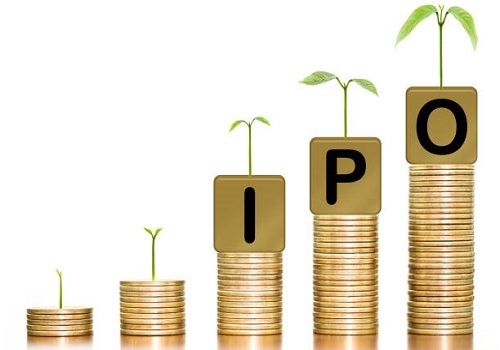
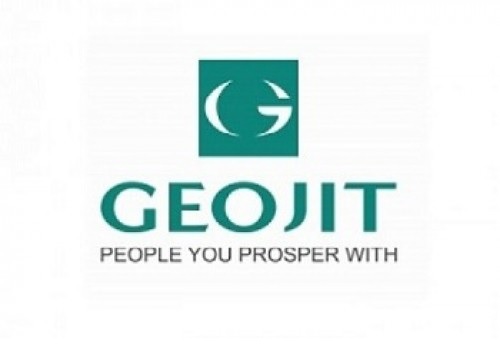
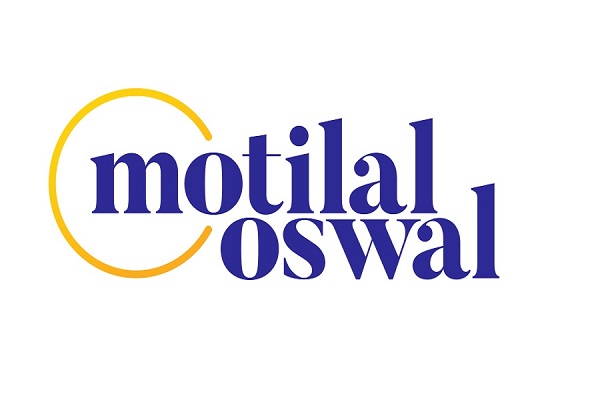

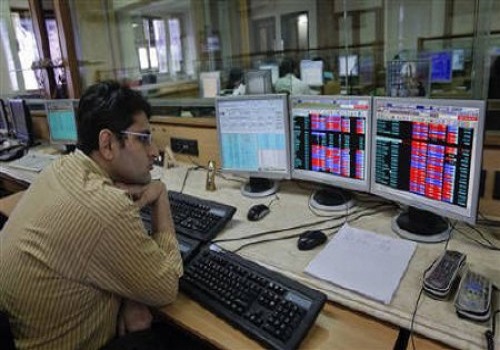
.jpg)


